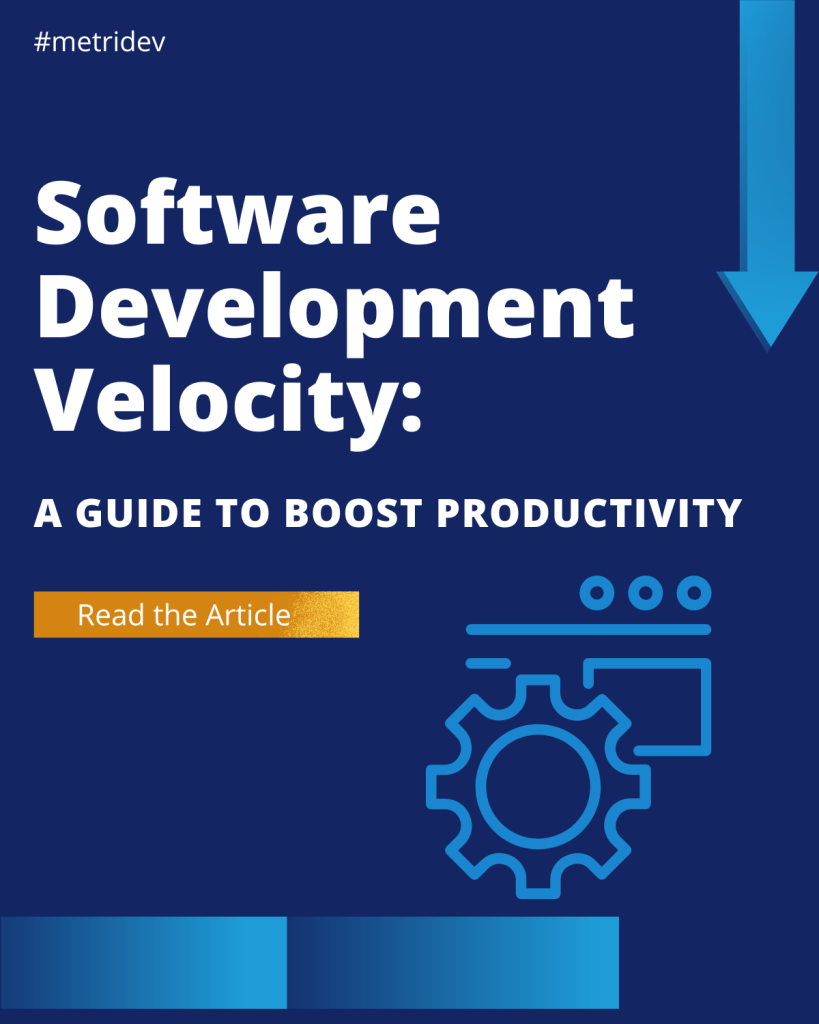Introduction
In today’s fast-paced and ever-changing business landscape, organizations are constantly seeking ways to optimize efficiency and foster collaboration among their teams. Consequently, one approach that has gained significant traction is the People Process Technology (PPT) framework. This framework provides a structured and holistic approach to improving organizational performance by aligning three critical elements: people, process, and technology. By understanding the interplay between these elements, businesses can enhance their operations, drive innovation, and achieve sustainable success.
Understanding the Elements of the PPT Framework
The People Process Technology framework is a strategic model that recognizes the interconnectedness of people, process, and technology within an organization. It acknowledges that these elements are not isolated, but rather, they work together synergistically to drive organizational performance. Moreover, the “people” element focuses on the individuals within the organization, including employees, managers, leaders, and stakeholders. It recognizes that people are the driving force behind any successful endeavor and emphasizes the importance of nurturing a positive and productive workforce.
Similarly, the “process” element refers to the series of steps and activities that organizations undertake to achieve their goals. It involves designing, implementing, and continuously improving workflows, procedures, and systems to streamline operations and enhance efficiency. By optimizing processes, organizations can reduce redundancies, minimize errors, and improve overall productivity. Furthermore, the “technology” element encompasses the tools, systems, and technologies that organizations leverage to support their operations. It includes hardware, software, communication networks, and any other technology infrastructure that facilitates collaboration, communication, and information sharing. By adopting the right technologies, organizations can enhance collaboration, automate tasks, and enable seamless information exchange.
What is the People Process Technology Framework for Change Management?
Change is an inevitable part of any organization’s journey, and managing it effectively is crucial for success. The People Process Technology framework offers valuable insights into change management by providing a structured approach to navigating organizational transformations.
- When it comes to change management, the “people” element becomes even more critical. Organizations need to understand the concerns, fears, and aspirations of their employees during times of change. By involving employees in the change process, providing clear communication, and offering support, organizations can mitigate resistance and foster a culture of acceptance and adaptability.
- The “process” element in change management focuses on designing and implementing effective change management processes. This involves creating a roadmap, defining roles and responsibilities, and establishing clear milestones and metrics to track progress. By following a well-defined process, organizations can ensure that change initiatives are executed smoothly and efficiently.
- Technology plays a significant role in change management by enabling collaboration and communication. Organizations can leverage technology platforms to facilitate virtual meetings, share information and resources, and foster a sense of community among employees. By embracing technology, organizations can bridge geographical barriers and create a unified and engaged workforce.
Importance of the People Element in the PPT Framework
While all three elements of the PPT framework are crucial, the “people” element holds a special place in driving organizational success. It is the people who bring innovation, creativity, and dedication to the table, and their commitment and engagement are vital for achieving desired outcomes.
Organizations must prioritize the well-being and development of their employees. Consequently, by investing in training and development programs, offering competitive compensation and benefits, and fostering a positive work environment, organizations can attract and retain top talent. Moreover, engaged employees are more likely to go the extra mile, contribute innovative ideas, and collaborate effectively with their peers.
In addition to individual employees, the “people” element also encompasses the collective intelligence of teams and departments. Effective collaboration and teamwork are essential for achieving organizational goals. By promoting a culture of collaboration, organizations can break down silos, encourage knowledge sharing, and harness the collective expertise of their workforce.
What is the People Process and Technology Strategy?
The People Process and Technology (PPT) strategy is a comprehensive approach that organizations can adopt to align their people, processes, and technology with their overall strategic objectives. It involves a systematic assessment of the current state, identification of gaps and opportunities, and the development of a roadmap to achieve desired outcomes. Transitioning smoothly from one phase to another often relies on the effective utilization of these components. Firstly, the “people” component of the PPT strategy focuses on analyzing the skills, competencies, and capabilities of the workforce. Organizations need to identify any skill gaps and develop strategies to bridge them. This may involve training and development programs, talent acquisition initiatives, or succession planning to ensure a robust and adaptable workforce.
Secondly, the “process” component of the PPT strategy involves evaluating existing workflows and procedures to identify areas for improvement. Organizations need to streamline processes, eliminate bottlenecks, and implement best practices to enhance efficiency. This may include process automation, standardization, or the adoption of lean methodologies to eliminate waste and improve productivity. Lastly, the “technology” component of the PPT strategy revolves around assessing the current technology infrastructure and identifying opportunities for enhancement. Organizations need to invest in technology solutions that align with their strategic objectives and enable collaboration and innovation. This may involve upgrading existing systems, adopting new technologies, or leveraging cloud-based platforms for scalability and flexibility. By addressing these three components systematically, organizations can develop a cohesive strategy that drives success and achieves desired outcomes.

Enhancing Efficiency through Effective Processes in the PPT Framework
Efficiency is a key driver of organizational success. Therefore, by optimizing processes, organizations can reduce costs, minimize errors, and improve customer satisfaction. Moreover, the PPT framework provides a structured approach to enhancing efficiency by aligning people, processes, and technology.
To enhance efficiency, organizations need to analyze and streamline their processes. This involves mapping out existing workflows, identifying bottlenecks and areas for improvement, and implementing changes to eliminate inefficiencies. By adopting lean methodologies, organizations can eliminate waste, standardize processes, and drive continuous improvement.
Automation is another critical aspect of enhancing efficiency. By leveraging technology to automate repetitive and manual tasks, organizations can free up valuable time and resources. This allows employees to focus on higher-value activities, such as strategic decision-making, innovation, and customer engagement.
In addition to process optimization and automation, organizations need to foster a culture of efficiency. This involves promoting accountability, setting clear expectations, and recognizing and rewarding efficient behaviors. By creating an environment that values efficiency, organizations can drive a mindset shift and empower employees to take ownership of their work and drive continuous improvement.
Leveraging Technology for Collaboration in the PPT Framework
Effective collaboration is essential for driving innovation, problem-solving, and achieving organizational goals. Moreover, the PPT framework recognizes the role of technology in enabling collaboration and provides organizations with valuable insights into leveraging technology for enhanced collaboration. Furthermore, technology plays a crucial role in breaking down geographical barriers and enabling virtual collaboration. By leveraging video conferencing, instant messaging, and virtual project management platforms, organizations can facilitate communication and information sharing among geographically dispersed teams, allowing them to collaborate in real-time, share ideas, and work together seamlessly.
Additionally, cloud-based technologies offer organizations the flexibility and scalability needed for effective collaboration. By adopting cloud-based collaboration platforms, organizations can store and share documents, collaborate on projects, and track progress in a centralized and accessible manner, thereby eliminating the need for multiple versions of documents, reducing confusion, and enhancing productivity. Moreover, in addition to virtual collaboration, technology also enables social collaboration within organizations. Social intranets, online communities, and enterprise social networks foster a sense of community and enable knowledge sharing among employees. By providing a platform for employees to connect, share ideas, and collaborate, organizations can tap into the collective intelligence of their workforce and drive innovation.
Challenges and Limitations of the PPT Framework
While the PPT framework offers valuable insights into optimizing efficiency and fostering collaboration, it is not without its challenges and limitations. Organizations need to be aware of these challenges and address them proactively to maximize the benefits of the framework. One of the challenges organizations face is resistance to change. Implementing the PPT framework requires a cultural shift and may disrupt established processes and routines. Organizations need to invest in change management initiatives, communicate the benefits of the framework, and provide support to employees during the transition.
Another challenge is the complexity of aligning people, processes, and technology. Each element has its own intricacies and requires careful consideration. Organizations need to invest time and resources in assessing their current state, identifying gaps, and developing a comprehensive roadmap for implementation. Furthermore, organizations need to ensure that the technology they adopt aligns with their strategic objectives and is compatible with existing systems. Integration challenges, data security concerns, and the need for ongoing maintenance and support can pose additional hurdles.
Despite these challenges, organizations that invest in understanding and implementing the PPT framework can reap significant rewards in terms of improved efficiency, enhanced collaboration, and sustainable growth.
What are the Three Pillars of People Process?
The Three Pillars of People Process are an essential component of the PPT framework. These pillars provide a foundation for organizations to optimize their people-related processes and drive performance.
Firstly is talent acquisition and development. Organizations need to attract and retain top talent by implementing effective recruitment strategies, offering competitive compensation and benefits, and providing opportunities for growth and development. By investing in their workforce, organizations can build a strong and adaptable team that can drive innovation and achieve organizational goals.
Secondly is performance management. Organizations need to establish clear performance expectations, provide regular feedback and coaching, and recognize and reward high performers. By implementing a performance management system, organizations can align individual goals with organizational objectives, foster accountability, and drive continuous improvement.
Finally the third pillar is employee engagement and well-being. Organizations need to create a positive work environment, promote work-life balance, and provide resources and support for employee well-being. By prioritizing the well-being of their employees, organizations can enhance engagement, reduce turnover, and foster a culture of productivity and innovation.
By focusing on these three pillars, organizations can optimize their people-related processes and create a workforce that is engaged, motivated, and committed to achieving organizational objectives.
Best Practices for Implementing the PPT Framework
Implementing the PPT framework requires careful planning, execution, and ongoing evaluation. To maximize the benefits of the framework, organizations can adopt the following best practices:
- Start with a comprehensive assessment: Before implementing the PPT framework, organizations need to assess their current state, identify areas for improvement, and set clear objectives. This involves analyzing existing processes, evaluating technology infrastructure, and understanding the needs and aspirations of employees.
- Engage stakeholders: Successful implementation of the PPT framework requires buy-in and support from key stakeholders. Organizations need to involve employees, managers, leaders, and other relevant stakeholders in the process. This fosters a sense of ownership and ensures that the framework is aligned with organizational goals and values.
- Communicate effectively: Clear and consistent communication is crucial for successful implementation. Organizations need to communicate the purpose, benefits, and expected outcomes of the PPT framework to all stakeholders. This includes providing training and support, addressing concerns and questions, and celebrating successes along the way.
- Monitor and evaluate: Implementation of the PPT framework should not be a one-time event. Organizations need to establish metrics and KPIs to track progress, evaluate the effectiveness of the framework, and make necessary adjustments. Regular monitoring and evaluation allow organizations to identify areas for improvement and drive continuous enhancement.
- Invest in ongoing training and development: To maximize the benefits of the PPT framework, organizations need to invest in training and development programs. Subsequently, this ensures that employees have the necessary skills and knowledge to leverage technology, optimize processes, and collaborate effectively. Moreover, ongoing training and development foster a culture of learning and innovation.
By following these best practices, organizations can effectively implement the PPT framework and optimize efficiency and collaboration.
What is an Example of a Process Technology?
Process technologies, essential for optimizing operations, encompass the tools and systems organizations adopt to enhance efficiency. These technologies automate and streamline workflows, eliminating manual tasks while facilitating seamless information exchange. One example illustrating this is Robotic Process Automation (RPA). RPA revolutionizes operations by automating repetitive, rule-based tasks through software robots or “bots” capable of mimicking human actions across systems and applications. Leveraging RPA yields manifold benefits, including error reduction, accelerated processing, and workforce reallocation towards higher-value activities.
In addition, Business Process Management (BPM) software stands out as another prominent process technology. BPM software empowers organizations to design, model, and automate business processes, providing a centralized platform for documentation, workflow management, and performance monitoring. By embracing BPM software, organizations streamline processes, enhance visibility, and foster continuous improvement. These examples underscore the diverse range of process technologies available for operational optimization. However, the selection of process technology hinges on the specific needs and objectives of each organization.
Tools and Resources for Optimizing Efficiency and Collaboration using the PPT Framework
Implementing the PPT framework requires organizations to leverage tools and resources that enable optimization of efficiency and collaboration. Here are some key tools and resources that can support organizations in their journey:
- Collaboration platforms. Tools like Microsoft Teams, Slack, and Google Workspace provide organizations with a centralized platform for communication, collaboration, and document sharing. Consequently, these platforms enable real-time collaboration, virtual meetings, and seamless information exchange among teams.
- Project management software: Tools like Trello, and Jira help organizations manage projects, track progress, and allocate resources effectively. Furthermore, these software solutions provide visibility into project timelines, milestones, and dependencies, facilitating collaboration and ensuring project success.
- Process automation tools. Process automation tools like UiPath, Automation Anywhere, and Blue Prism enable organizations to automate repetitive and rule-based tasks. These tools help eliminate manual errors, reduce processing time, and free up employees to focus on value-added activities.
- Learning and development platforms. Organizations can leverage learning and development platforms like Udemy, LinkedIn Learning, and Coursera to provide employees with access to training and development resources. Additionally, these platforms offer a wide range of courses and certifications that employees can pursue to enhance their skills and stay abreast of industry trends.
- Change management resources. Implementing the PPT framework often involves navigating organizational change. Consequently, organizations can leverage resources like Prosci’s ADKAR model, Kotter’s 8-Step Process for Leading Change, and McKinsey’s Change Management Toolkit to guide them through the change management process.
These are just a few examples of the tools and resources available to organizations to optimize efficiency and foster collaboration using the PPT framework. The choice of tools depends on the specific needs and objectives of the organization.
Conclusion
The People Process Technology (PPT) Framework provides a comprehensive approach for organizations to optimize efficiency and collaboration. By aligning the people, process, and technology elements, businesses can drive productivity, enhance workflows, and achieve their strategic objectives. While implementing the PPT Framework comes with challenges, organizations can overcome them by focusing on change management, fostering a culture of collaboration, and leveraging the right technology tools. By embracing the PPT Framework, organizations can position themselves for success in today’s dynamic and competitive business landscape.
To learn more about how the People Process Technology Framework can optimize efficiency and collaboration in your organization, read our article DevOps Framework for Enhanced Efficiency.









Leave a Reply